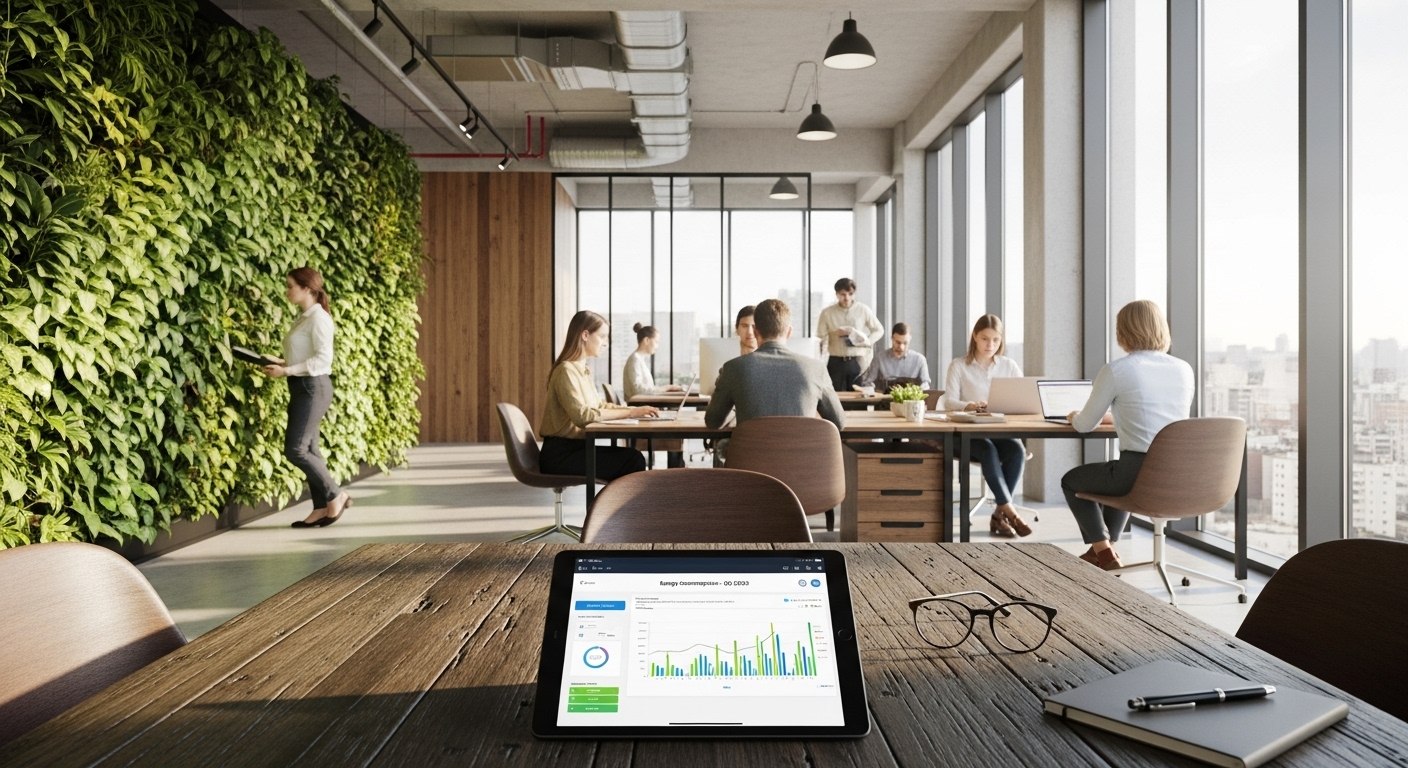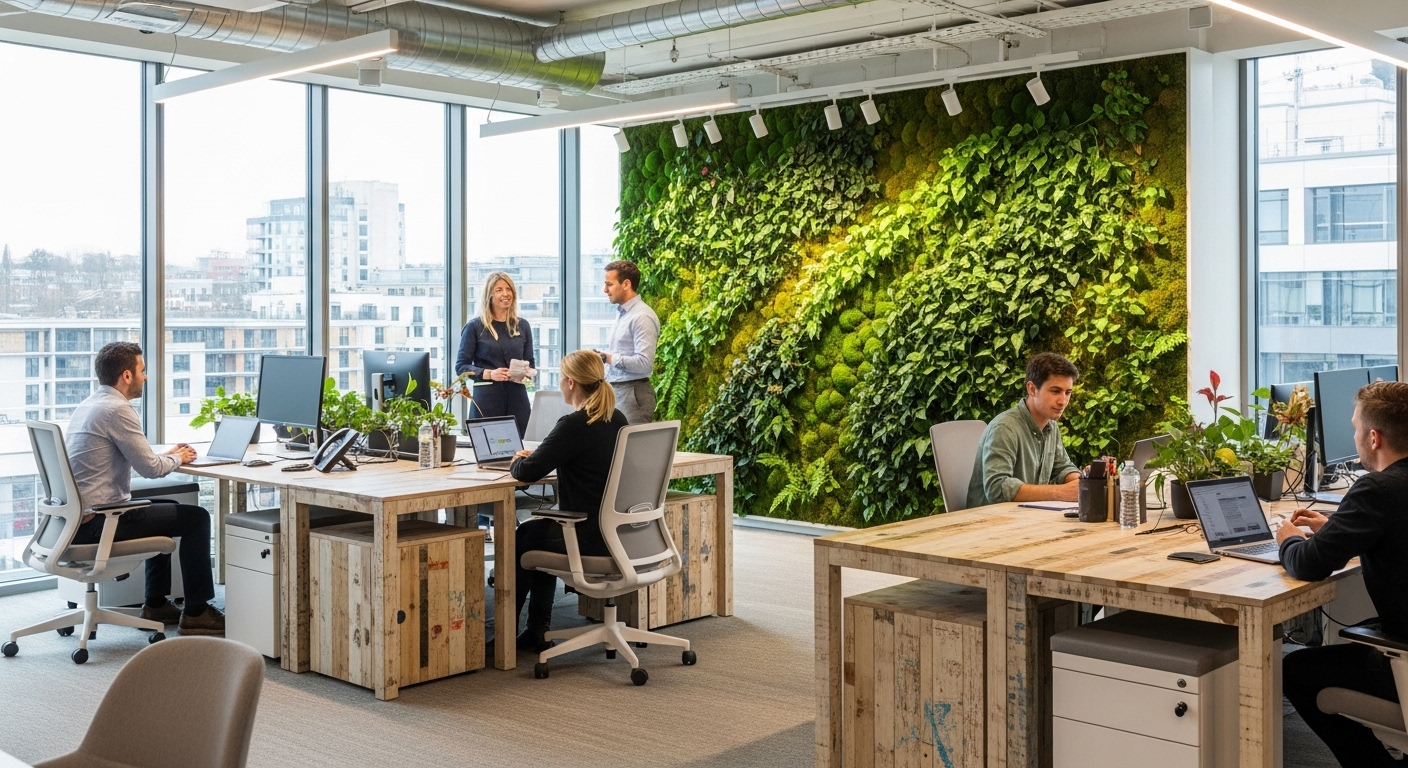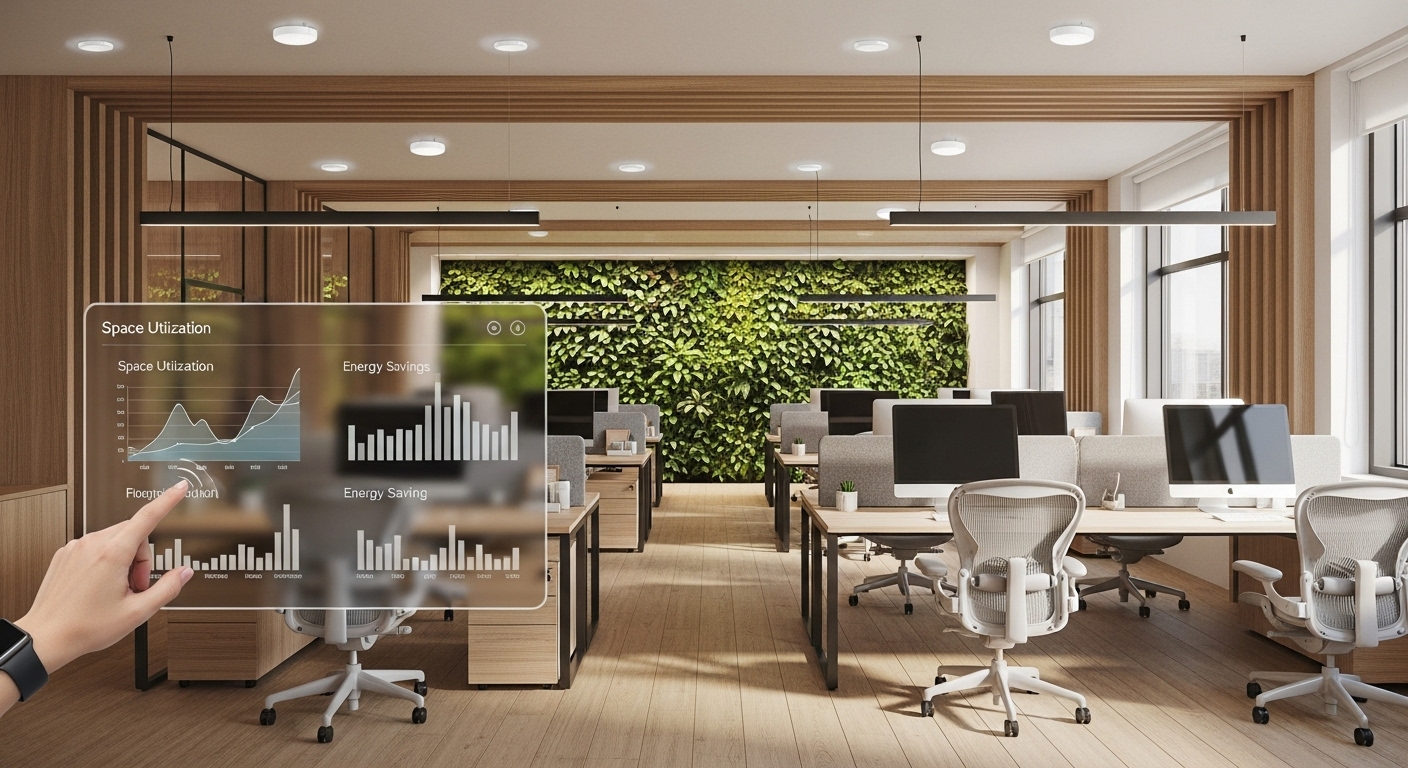The modern workplace is undergoing a radical transformation. Beyond the shifts to hybrid and remote models, a deeper, more significant evolution is taking root: the rise of the sustainable workspace. This is no longer a niche trend or a feel-good corporate initiative, but a strategic imperative that sits at the intersection of environmental responsibility, employee well-being, and financial performance. As businesses navigate the future of work, creating an integrated ecosystem—where the physical environment, technology, and human experience are all designed with sustainability in mind—is becoming the definitive competitive advantage. It’s a holistic approach that recognizes the symbiotic relationship between a healthy planet, a healthy workforce, and a healthy bottom line. This guide explores the core components of this new workplace paradigm, moving beyond simple green initiatives to a fully integrated, strategic model for sustainable success.
The business case for going green
For years, sustainability was often viewed as a cost center, a necessary expense to meet regulatory requirements or bolster a company’s public image. That perception is now outdated. Today, the business case for sustainable workspaces is compelling and multifaceted, offering a significant return on investment (ROI) that impacts everything from operational expenses to talent acquisition. The most direct financial benefit comes from drastically reduced operational costs. Green buildings, optimized for energy and water efficiency, can lead to substantial savings. According to various studies, these buildings can lower energy consumption by 25-50% and reduce maintenance costs by up to 20% compared to conventional commercial properties. This is achieved through intelligent systems like motion-sensing LED lighting, smart HVAC that adjusts to occupancy, and water-saving fixtures. Beyond direct savings, sustainability is a powerful magnet for top talent. In a competitive job market, a company’s commitment to environmental and social governance (ESG) is a major differentiator. Employees, particularly from younger generations, are actively seeking employers whose values align with their own, and a green-certified, health-focused workplace is a tangible demonstration of that commitment. This enhanced brand reputation extends to clients and investors, strengthening a company’s overall ESG profile and creating long-term value.
Biophilic design: integrating nature for wellness and productivity
At the heart of many modern sustainable workspaces is the principle of biophilic design—the practice of connecting people and nature within our built environments. This concept goes far beyond simply placing a few potted plants on desks. It’s a design philosophy that strategically weaves natural elements into the office to improve employee well-being and cognitive function. This includes maximizing natural light, providing views of nature, using natural materials like wood and stone, and incorporating features like living walls or indoor water fountains. The positive impact of this approach is backed by extensive research. Exposure to natural light has been shown to reduce eyestrain and headaches, while views of greenery can lower stress and enhance creativity. One study found that workers in green-certified offices with biophilic elements had 26.4% higher cognitive function scores. By tapping into our innate human need to connect with nature, biophilic design creates a calming, restorative atmosphere that directly counters workplace stress and burnout. This focus on a healthier indoor environment not only boosts morale and satisfaction but also translates into measurable gains in focus, performance, and overall productivity, making it a critical component of any sustainable workspace strategy.
The circular economy in the workplace
The transition to a sustainable workspace demands a fundamental shift from a linear “take, make, dispose” model to a circular one. A circular economy in the office focuses on eliminating waste and maximizing the lifecycle of every resource, from furniture to electronics. This begins with sustainable procurement. It involves intentionally selecting products that are made from recycled or renewable materials, are designed for durability and repairability, and come from suppliers with transparent, ethical supply chains. Furniture made from reclaimed wood, chairs constructed with recycled plastics, or modular systems that can be reconfigured instead of replaced are all examples of this principle in action. Waste reduction is the other critical pillar. A comprehensive recycling and composting program is foundational, but a truly circular approach goes further by systematically designing out waste. This means phasing out single-use items, encouraging a paperless workflow through digital collaboration tools, and choosing suppliers that use minimal, recyclable packaging. It also involves responsible end-of-life management for assets, ensuring that old electronics are properly recycled or refurbished and that furniture is donated or repurposed. Embracing circularity not only minimizes a company’s environmental footprint but can also lead to significant cost savings by reducing purchasing needs and waste disposal fees.
Smart technology as a sustainability enabler
Technology is the central nervous system of the modern sustainable workspace, providing the intelligence needed to optimize resource consumption and enhance the employee experience. The Internet of Things (IoT) has revolutionized building management, allowing for a network of sensors to collect real-time data on occupancy, temperature, and light levels. This data feeds into a central system that can make autonomous, energy-saving decisions. For example, an intelligent building management system can dim lights and adjust the thermostat in unoccupied meeting rooms, significantly cutting down on energy waste without impacting comfort or productivity. Smart energy monitoring systems provide granular insights into consumption patterns, helping facilities managers identify opportunities for further efficiency gains and track progress against sustainability goals. This technology also extends to water management, with smart fixtures that prevent leaks and reduce consumption. Beyond operational efficiency, smart tech can empower employees to become active participants in sustainability. Workplace apps can allow users to control their local environment, find green commuting options, or track their department’s progress on waste reduction goals, fostering a shared sense of responsibility and engagement.
Fostering a culture of sustainability
While sustainable design and smart technology provide the necessary infrastructure, a truly sustainable workspace can only be realized when it is supported by a deeply embedded culture of environmental responsibility. Without employee engagement, even the most advanced green building will fail to reach its full potential. Fostering this culture begins with clear communication and education. Leadership must champion the organization’s sustainability goals, explaining not just *what* is being done, but *why* it matters. Regular updates, workshops, and accessible information can empower employees with the knowledge they need to make sustainable choices. Engagement can be further bolstered by creating a dedicated “Green Team” of passionate employees who can lead initiatives, organize events, and act as sustainability ambassadors. Introducing friendly competitions or challenges between departments to reduce waste or energy consumption can also be a highly effective way to drive participation. Ultimately, the goal is to integrate sustainable practices into the daily habits of every employee, from defaulting to double-sided printing and properly sorting waste to powering down electronics at the end of the day. When sustainability becomes a shared value and a collective effort, the impact is magnified, transforming the workspace into a living example of the company’s commitment to the planet.
The roadmap to green building certifications
For organizations looking to formalize their commitment to sustainability and validate their efforts, pursuing a green building certification is a crucial step. Certifications like LEED (Leadership in Energy and Environmental Design), BREEAM (Building Research Establishment Environmental Assessment Method), and the WELL Building Standard provide a comprehensive framework for designing, constructing, and operating high-performance green buildings. These globally recognized standards offer a roadmap for best practices across a range of categories, including energy efficiency, water conservation, site selection, materials use, and indoor environmental quality. The process of certification itself is rigorous, requiring detailed documentation and third-party verification, which ensures that the building meets stringent performance criteria. Achieving a certification like LEED Platinum or WELL Gold serves as a powerful, transparent signal to employees, clients, and investors that the organization is a leader in sustainability. It not only enhances brand reputation but can also increase the property’s market value. Furthermore, these frameworks are not static; they are continuously updated to reflect the latest innovations in sustainable design and technology, encouraging ongoing improvement and ensuring that certified buildings remain at the forefront of the future of work. By aligning with these standards, companies can ensure their sustainable workspaces are built on a foundation of proven, impactful, and globally respected principles.
In conclusion, the shift towards sustainable workspaces represents one of the most vital and strategic opportunities in the future of work. It is an evolution from a siloed approach to a holistic, integrated ecosystem where every element—from the materials in the walls to the technology managing the lights and the culture uniting the team—is aligned toward a common purpose. This model delivers a powerful triple bottom line: a healthier planet through reduced resource consumption, healthier people through enhanced well-being and productivity, and healthier profits through operational savings and a powerful brand identity. Companies that embrace this integrated approach are not just building better offices; they are building resilient, future-proof organizations. They are creating environments that attract and inspire the best talent, operate with maximum efficiency, and demonstrate a genuine commitment to a better world. The sustainable workspace is no longer an alternative; it is the essential framework for enduring success in the decades to come.





